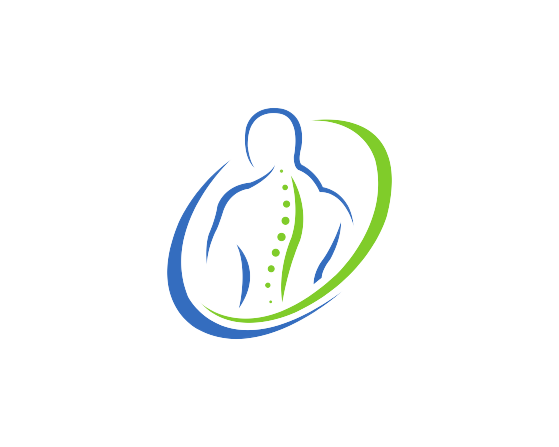Back pain is a common affliction that affects millions of people worldwide. It can be caused by a variety of factors such as poor posture, injury, or underlying medical conditions. While over-the-counter pain relievers are often used to relieve back pain, some people prefer to use alternative methods such as back pain patches.
What are back pain patches?
A back pain patch is a medicated adhesive patch that is applied to the skin to relieve pain. These patches typically contain active ingredients such as menthol, capsaicin, or salicylates that are absorbed through the skin to target the source of pain. The active ingredients in the patches work by blocking pain signals, reducing inflammation, and promoting blood flow, providing fast and convenient relief for back pain.
Why patches are good for back pain relief?
The benefits of back pain patches include:
- Convenience: Back pain patches are easy to apply and can be worn discreetly under clothing, making them a convenient option for people who have trouble swallowing pills or have gastrointestinal side effects from taking oral medications.
- Avoidance of oral medication side effects: Back pain patches do not have the same risks as oral pain relievers, such as stomach upset, bleeding, and kidney problems, making them a safer option for long-term use.
- Fast relief: Back pain patches start working immediately after they are applied to the skin, providing fast pain relief compared to oral pain medications.
- No digestive absorption: Unlike oral pain medications, back pain patches do not need to be absorbed through the digestive system, making them a good option for people with digestive problems.
- Ease of use: Back pain patches are easy to apply and do not require any special preparation or storage, making them a convenient option for managing back pain.
What are the common types of prescription patches?
- Flector, also known as diclofenac epolamine, is a nonsteroidal anti-inflammatory drug (NSAID).
- Lidoderm, also known as lidocaine, is a local anesthetic.
- Duragesic, also known as fentanyl, is a type of opioid medication.
Methanol patch is also an alternative patch sold over-the-counter which you can use up to 3 to 4 times a day.
How to use back pain patches?
- Flector (diclofenac epolamine)
The patch contains diclofenac, a non-steroidal anti-inflammatory drug (NSAID), which is absorbed through the skin and into the bloodstream over a period of time.
The advantage of using diclofenac epolamine (Flector) as a back pain patch is that it provides localized pain relief and reduces the risk of systemic side effects that can occur with oral NSAIDs. The patch is applied directly to the site of pain and releases the medication over a period of time, providing sustained pain relief.
Best for: It is a prescription-only transdermal patch used to treat pain and inflammation caused by conditions such as tendinitis, bursitis, and acute back pain.
Dosage: The recommended dosage for diclofenac epolamine patch varies depending on the condition being treated and the individual’s response to the medication. The typical dosage is one patch applied to the affected area every 12 hours, not exceeding two patches per day. The patch should be applied to a clean, dry area of skin, and should not be cut or altered.
- Lidoderm (lidocaine)
The patch contains lidocaine, a local anesthetic, which is absorbed through the skin and into the bloodstream over a period of time. Lidocaine works by blocking pain signals in the nervous system, providing fast and effective pain relief.
The patches are applied directly to the site of pain and provide localized pain relief, reducing the risk of systemic side effects that can occur with oral pain medications.
Best for: Lidoderm patches are commonly used to relieve pain from conditions such as shingles, postherpetic neuralgia, and peripheral neuropathic pain.
Dosage: The recommended dosage for Lidoderm (lidocaine) patch varies depending on the individual’s response to the medication and the condition being treated. The typical dosage is one patch applied to the affected area every 12 hours, not exceeding three patches per day. The patch should be applied to a clean, dry area of skin, and should not be cut or altered.
- Duragesic (fentanyl)
The patch contains fentanyl, a powerful synthetic opioid, which is absorbed through the skin and into the bloodstream over a period of time. Fentanyl works by binding to the opioid receptors in the brain and blocking the sensation of pain.
Best for: Duragesic patches are used to treat chronic pain that is not adequately managed by other pain medications.
Dosage: The recommended dosage for Duragesic (fentanyl) patch varies depending on the individual’s pain level, tolerance to opioids, and response to the medication. The patches are applied directly to the skin and provide sustained pain relief over a period of 72 hours. The starting dose is determined by a doctor and should be adjusted based on the patient’s needs and response to the medication.
It is important to follow the instructions for using prescription patches as directed by a doctor and to not exceed the recommended dosage. Overuse of the patches or using it for longer than recommended can increase the risk of side effects and may not provide additional pain relief.
What are the side effects of using back pain patches?
The common side effects of using back pain patches vary depending on the type of patch and the active ingredient.
Common side effects of topical pain patches, such as those containing diclofenac or lidocaine, may include skin irritation, redness, itching, and burning at the site of application.
Common side effects of prescription patches, such as those containing fentanyl, can be more serious and may include:
- Nausea and vomiting
- Constipation
- Drowsiness and sedation
- Confusion
- Respiratory depression
- Dizziness and lightheadedness
- Itching and sweating
Severe side effects of using back pain patches can occur, especially with prescription patches containing potent medications such as fentanyl.
Severe side effects of using fentanyl patches may include:
- Respiratory depression: Fentanyl patches can slow down breathing, which can be life-threatening.
- Overdose: Overdose can occur if the patch is misused or if a person takes too much of the medication. Overdose symptoms may include extreme sleepiness, slow or shallow breathing, cold and clammy skin, and blue or purple lips or fingers.
- Allergic reactions: Some individuals may experience an allergic reaction to the adhesive or medication in the patch, which can result in symptoms such as itching, redness, and swelling.
It is important consult a doctor about the potential risks and benefits of using back pain patches, especially prescription patches containing potent medications, and to seek immediate medical attention if any severe side effects occur. Additionally, it is important to follow the instructions for using back pain patches as directed by a doctor to reduce the risk of side effects and ensure safe and effective use.
What are the precautions for using back pain patches?
There are several precautions to consider when using back pain patches, especially prescription patches containing potent medications, to reduce the risk of side effects and ensure safe and effective use.
- Talk to a doctor: Before using a back pain patch, it is important to talk to a doctor about the potential risks and benefits and to determine the most appropriate and effective form of treatment for the individual.
- Use as directed: Back pain patches should be used as directed by a doctor and should not be used for a longer period of time than recommended or in a different manner than instructed.
- Store properly: Back pain patches should be stored in a cool, dry place, away from heat and direct sunlight, to ensure their potency and effectiveness.
- Avoid applying to broken skin: Back pain patches should not be applied to broken or irritated skin, as this can increase the risk of skin irritation and other side effects.
- Avoid alcohol and other sedatives: Back pain patches, especially those containing fentanyl, can cause drowsiness and sedation, and alcohol and other sedatives can increase these effects. It is important to avoid alcohol and other sedatives while using back pain patches.
- Use with caution in elderly and debilitated individuals: Back pain patches, especially those containing fentanyl, can cause respiratory depression and other side effects in elderly and debilitated individuals, who may be more sensitive to the effects of the medication.
Do back pain patches work?
Back pain patches can be an effective form of pain relief for some individuals. The efficacy of back pain patches depends on several factors, including the type of patch, the cause of the pain, and the individual’s response to the medication.
Topical pain patches, such as those containing diclofenac or lidocaine, work by delivering the medication directly to the source of pain through the skin. This can help to reduce inflammation and provide localized pain relief.
Prescription patches, such as those containing fentanyl, are used for the treatment of chronic pain and can be effective for individuals who have not responded to other forms of pain management. However, these patches are more potent and have the potential for serious side effects and overdose.
It is important to talk to a doctor about the best form of treatment for back pain, including the use of back pain patches, to determine the most appropriate and effective option for the individual. Additionally, any form of pain relief should be used in conjunction with other forms of treatment, such as physical therapy, exercise, and lifestyle changes, to address the underlying cause of the pain.
Takeaway
In conclusion, back pain patches are a type of topical pain relief option designed to deliver medication through the skin and into the underlying tissue to relieve back pain. They come in both over-the-counter and prescription forms, with the latter containing more potent medications such as fentanyl, diclofenac epolamine, and lidocaine.
The benefits of using back pain patches include a convenient and non-invasive administration, a low risk of side effects compared to oral medications, and the ability to target specific areas of pain for more effective relief.
Back pain patches are a great option for individuals seeking relief from back pain, particularly those who may not be able to take oral medications or who are looking for a more targeted form of treatment. However, as with any form of pain relief, it is important to talk to a doctor about the potential risks and benefits and to use back pain patches as directed to ensure safe and effective use.
For commercial back pain remedies, please check out the following links and support our affiliates:
Back Pain Breakthrough – A Movement and posture improvement program
My Back Pain Coach – A trainer to help improve back pain symptoms
Unlock Your Spine – Better spinal alignment for pain relief
Flexafen – A supplement for helping to improve mobility
Nervogen – A supplement to help with neuropathy
ArticBlast – Topical pain reliever liquid
Phytocet – CBD Pain relief supplement


